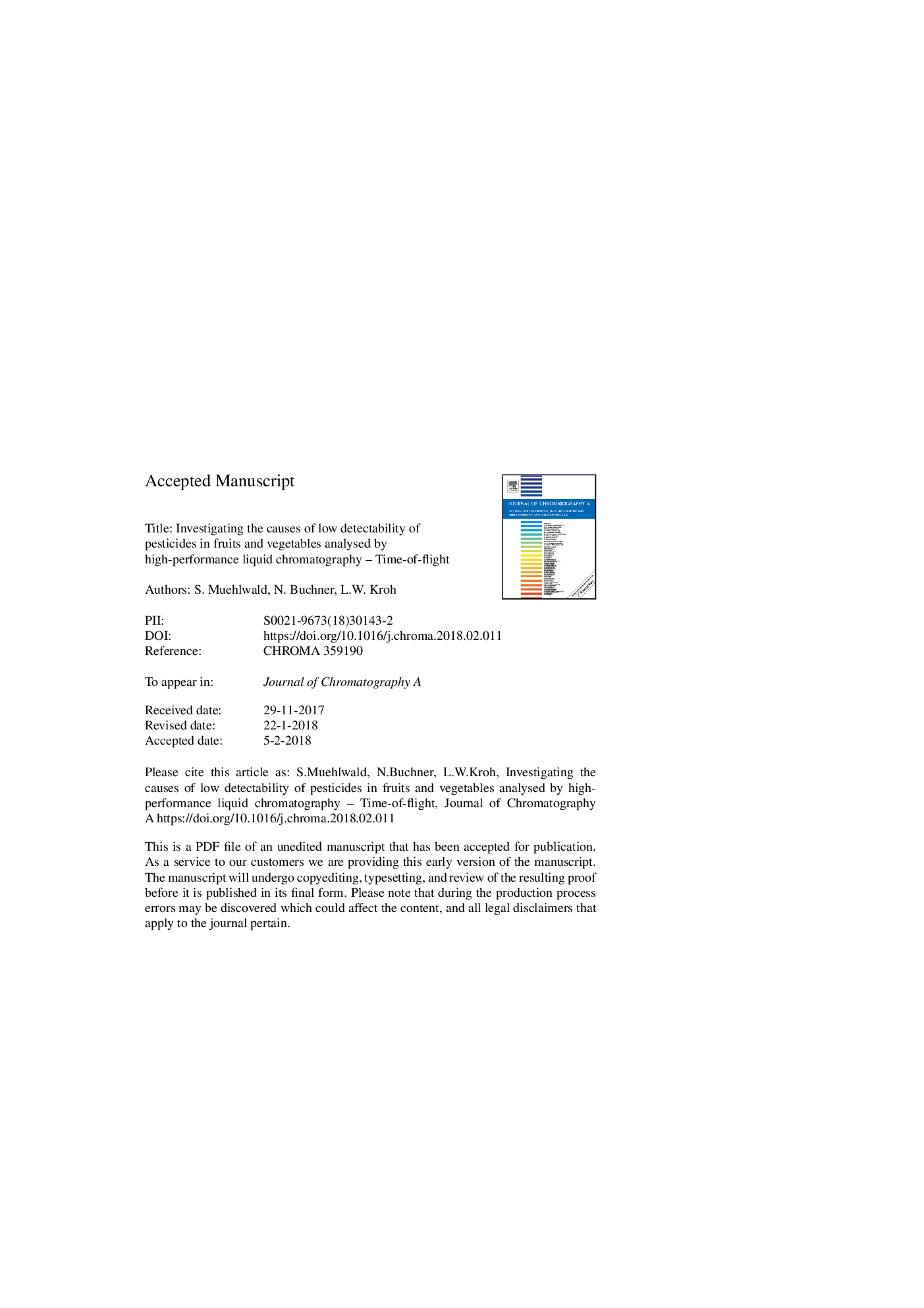| Article ID | Journal | Published Year | Pages | File Type |
|---|---|---|---|---|
| 7608591 | Journal of Chromatography A | 2018 | 35 Pages |
Abstract
Because of the high number of possible pesticide residues and their chemical complexity, it is necessary to develop methods which cover a broad range of pesticides. In this work, a qualitative multi-screening method for pesticides was developed by use of HPLC-ESI-Q-TOF. 110 pesticides were chosen for the creation of a personal compound database and library (PCDL). The MassHunter Qualitative Analysis software from Agilent Technologies was used to identify the analytes. The software parameter settings were optimised to produce a low number of false positive as well as false negative results. The method was validated for 78 selected pesticides. However, the validation criteria were not fulfilled for 45 analytes. Due to this result, investigations were started to elucidate reasons for the low detectability. It could be demonstrated that the three main causes of the signal suppression were the co-eluting matrix (matrix effect), the low sensitivity of the analyte in standard solution and the fragmentation of the analyte in the ion source (in-source collision-induced dissociation). In this paper different examples are discussed showing that the impact of these three causes is different for each analyte. For example, it is possible that an analyte with low signal intensity and an intense fragmentation in the ion source is detectable in a difficult matrix, whereas an analyte with a high sensitivity and a low fragmentation is not detectable in a simple matrix. Additionally, it could be shown that in-source fragments are a helpful tool for an unambiguous identification.
Keywords
Related Topics
Physical Sciences and Engineering
Chemistry
Analytical Chemistry
Authors
S. Muehlwald, N. Buchner, L.W. Kroh,
